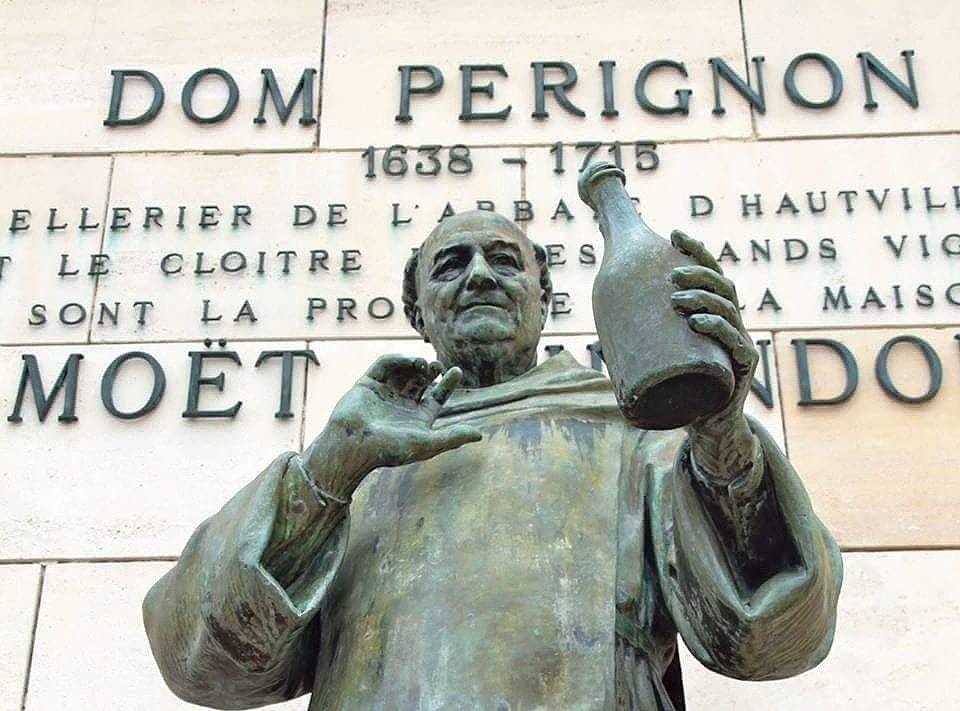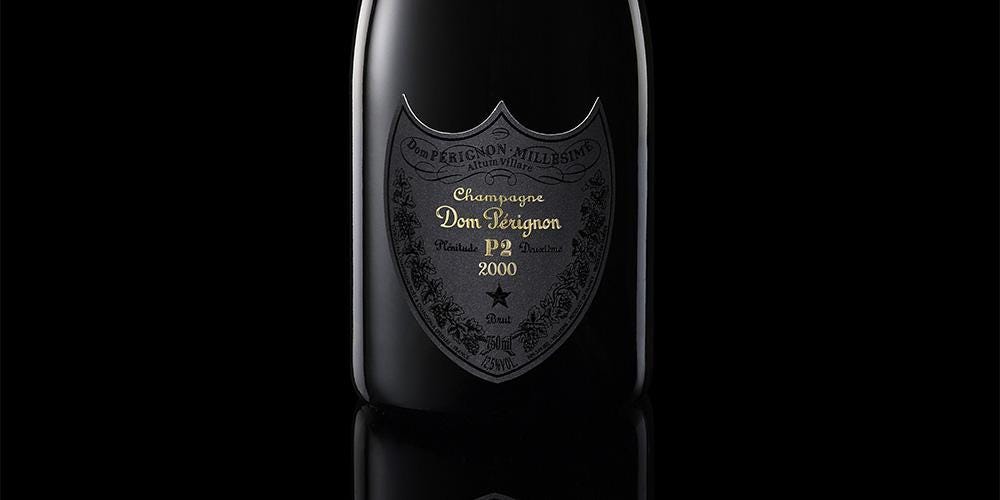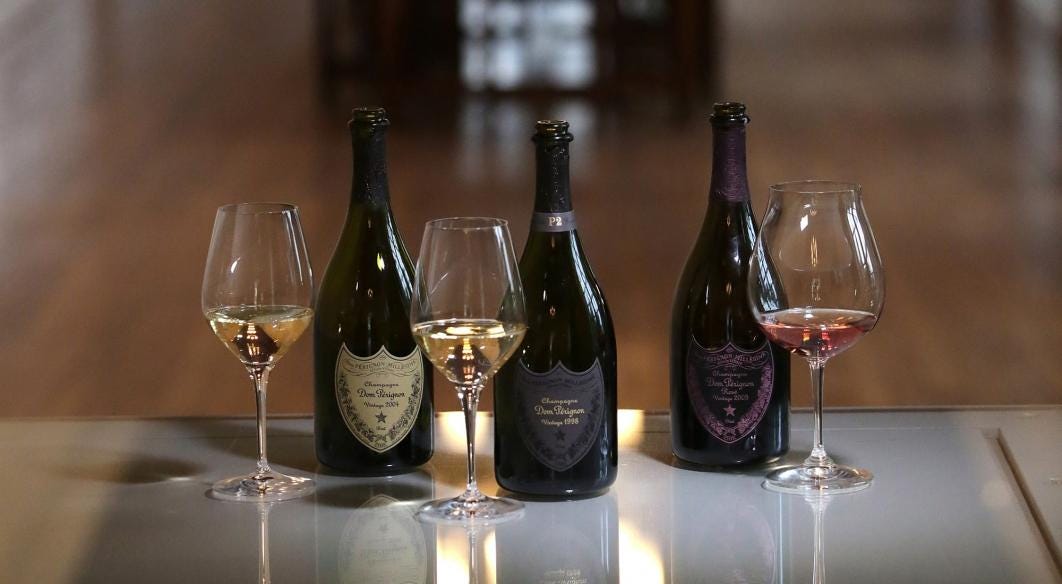Dom Pérignon: All You Ever Wanted To Know
Dom Pérignon isn't just one of the Grande Marque you can possibly find on the shelves of both supermarket and/ or important wineries, but it's an iconic product that built up its reputation through the years.
Grande Marque
Literally means a great or a famous brand. This fame may be derived from either quality or volume. Quality alone is insufficient: the quality must result in fame for a brand to become a Grande Marque.
World Encyclopedia Of Champagne & Sparkling Wine (Tom Stevenson, 2019)
Either you like it or not, you have to be familiar with this brand and its products. There is no way you can define yourself as a wine expert unless you know the myth of Dom Pérignon.
The problem is that finding reliable information isn't easy at all. The houses' websites tell you what they want you to know because, at the end of the day, their goal is to sell you as many bottles as possible. But The Wine Jokers got their hands dirty for you, trying to gather the most reliable sources to write down this article.
You only need to sit down and take you time to read it, possibly with a slighlty chilled glass of Champagne (Dom Pérignon would enhance the experience even more...).
Prestige Cuvée: The Creation Of A New Concept
The glory of Dom Pérignon was the decision by Moët & Chandon to launch the very first Prestige Cuvée in 1936 and to name it after him.
Even though the origin of Roederer Crystal goes back much further, this product was a "tailor-made" product specifically created to satisfy the requests of Tsar Alexander II. But it was only commercially available in 1945, whereas the first Dom Pérignon prestige cuvée came out in 1921.
Thus, Moët & Chandon created a new category of the market. This way, buyers could start perceiving the brand as a luxury brand, a sort of "step up in quality", compared to the "entry-level" products.
It's interesting to point out that some years ago at a Christie's auction in London, a bottle of 1926 Dom Pérignon was cataloged as the second vintage released. However, this vintage doesn't officially exist. In fact, Moët followed 1921 with the legendary 1928 vintage. So, was 1926 a fake bottle? Not at all. But the words "Dom Pérignon" weren't there at that time.
Instead, the label was saying "Champagne specially shipped for Simon Brothers & Co's Centenary 1835-1935" and it was one of 300 bottles commissioned by Moët's English agents to send to 150 of their best customers.
The rumor of great champagne was traveling overseas and Americans wanted a sip of this legendary product too. That's how 100 cases went to New York in November 1936. But, the London agents couldn't use the exclusive label created specifically for the centenary. Therefore, they had to create a new brand. The Moët's marketing director of that time, Robert-Jean de Vogüé who decided to name it after Dom Pérignon.
But earlier we said that the first cuvée Dom Perignon came out in 1921. How could Moët go back to the 1921 vintage of a wine in a specially commissioned bottle when the 1926 vintage had to be anything other than a special anniversary cuvée? Transvasaged is the answer.
Wines were transvasaged from the original bottles to the specially shaped Dom Pérignon bottles. In fact, Simon Brothers' centenary cuvée and 1921, 1928, 1929, and 1934 vintages were all transvasaged. We had to wait till the 1943 vintage to get the first cuvée Dom Pérignon that fermented inside its famous and iconic bottle.
Dom Pérignon In A Snapshot
We want to start up by giving you the most important highlights. This is the famous house in a nutshell.
Types of producers = Négociant-Manipulant
Number of bottles = Not released (but we're counting in millions)
Chef de Cave = Vincent Chaperon
Group ownership = LVMH
Dom Pérignon's hallmark:
- Perfect harmony between Pinot Noir and Chardonnay
- Reductive style
- After second fermentation the wine is allowed to age for more than 8 years in the bottle
- Dosage has been reduced during the last years
Products
1) Dom Pérignon
2) Dom Pérignon P2
3) Dom Pérignon P3
4) Dom Pérignon Rosé
5) Dom Pérignon P2 Rosé
Every product is a blend of Chardonnay and Pinot Noir in which proportion can vary from vintage to vintage.
Dom Pérignon Rosé came out in 1959 and the Plenitude styles, wines matured extra-long on the lees, came out in 2000.
In other words, P2 and P3 are late-disgorged wines with the latter that can spend as long as 25 years on its lees. Generally speaking, many late-disgorged wines express themselves to their fullest sooner after sediment removal. But time isn't an issue when it comes to Dom Pérignon.
Type Of Producer
As you can see, Dom Pérignon is a Négociant-Manipulant (NM) that in other words is a producer who may or may not own vineyards and is allowed to buy grapes and wine in volume from growers, cooperatives, and other members of the négoce to make champagne.
This is mandatory information that you can find on the labels (usually written in very small characters...). If you want to discover the other types of producers and the labeling system in Champagne, you can refer to our article "How To Read The Champagne Label".
Chef de Cave
Dom Pérignon started life as Moët & Chandon prestige cuvée but today it enjoys an independent position as an icon of champagne. Today's Chef de Cave is Vincent Chaperon, but it's under Richard Geoffroy's wing that Dom Pérignon created its own identity and started to live a life of its own.
Richard Geoffroy was Chef de Cave and director of oenology for the whole Moët & Chandon's portfolio for 28 years. After performing great results for so many years, he can finally enjoy his well-deserved retirement (we picture him sipping a Dom Pérignon P3 right now...).
Dom Pérignon's Hallmark
The aim of Dom Pérignon is different from many other prestige cuvées. In fact, their goal is to make an easy-drinking style that is both approachable at a very young stage and extremely complex after decades in the bottle.
Today, it is the most blended vintage champagne. Its base wines may come from 20 different villages. Typically as many as 16 Grand Cru villages are part of the blend. As far as the Premier Cru villages are concerned, Dom Pérignon House's village of Hautvillers, as well as Vertus, qualifiy for the wine.
Both Chardonnay and Pinot Noir play a pivotal role in the blend. The perfect harmony between them is one of Dom Pérignon's hallmarks. To be more specific, the most important Chardonnay villages in the blend are:
Chouilly
Cramant
Avize
Le Mesnil-Sur-Oger
Pinot Noir comes from:
Aÿ
Bouzy
Mailly
Verzenay
Sourcing the best grapes, adopting reductive winemaking techniques, and more than 8 years on the lees allow this champagne to be distinctive and unique.
Conclusions
We aren't here to highlight how great Dom Pérignon is. For sure they have brand ambassadors that can get the job done way better than us.
We just wanted to draw your attention to a product defined by many wine snub as "standard". Well, guess what, this is exactly what they want to accomplish. They want to ensure the same quality year after year despite the vintages.
It's a product that must be waited for. If you drink it as soon as released, don't expect the autolytic character you might find in a Krug Grande Cuvée... they are two different styles that can't be compared indeed. In fact, we would say that this is like comparing apples and oranges.
Understanding when your Dom Pérignon bottle might develop some more complex characteristics isn't easy at all. You should be following the development of the wine to do so. But the lack of disgorgement indication makes this impossible. The best piece of advice we can give you is to make some math (considering that the post-disgorgement date usually happens around 9 years after the vintage).







